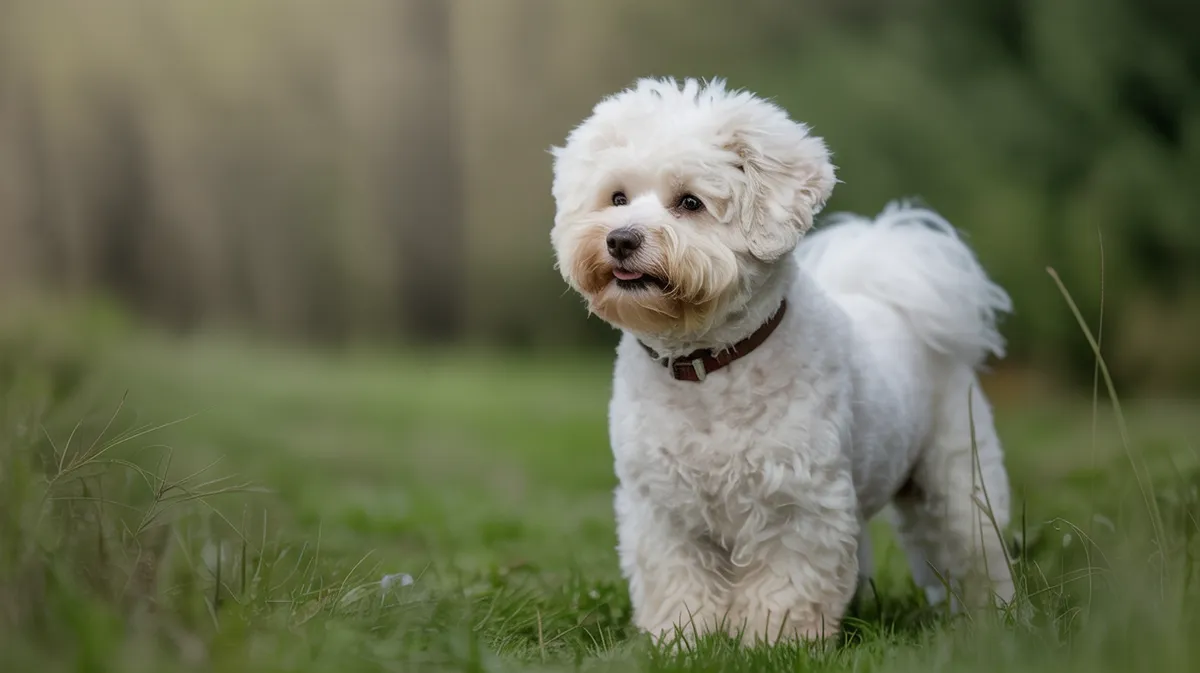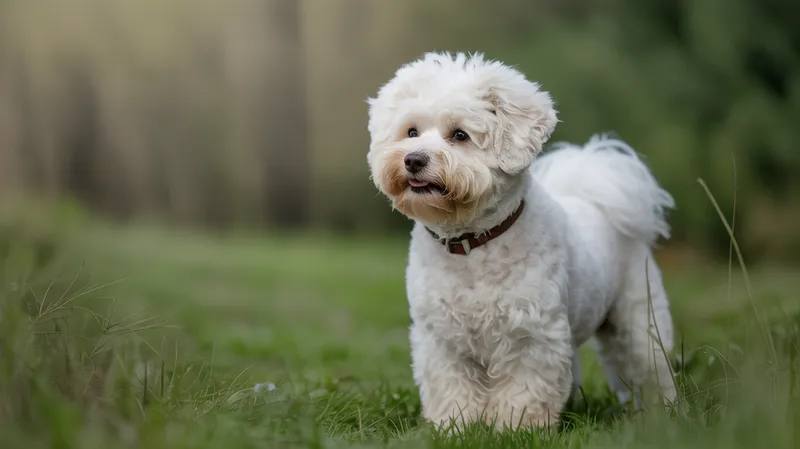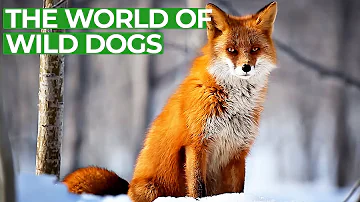
Bichon Frise
Canis lupus familiaris

Meet the Bichon Frise
The Bichon Frise is a small, cheerful dog breed known for its distinctive fluffy white coat and friendly, affectionate temperament. Originally bred as a companion animal, the Bichon Frise has a playful and gentle nature, making it a popular family pet around the world. Its hypoallergenic coat requires regular grooming to prevent matting, and the breed is known for being intelligent and easy to train. The Bichon Frise thrives in human company and adapts well to apartment living, as long as it receives regular exercise and mental stimulation.
Classification
Mammal
Habitat
Domestic
Diet
Omnivore
Lifespan
12-15 years
Conservation
Least Concern
Weight
5-8 kg (11-18 lbs)
📖Fascinating Facts
Hypoallergenic Coat
The Bichon Frise's curly, double-layered coat produces very little dander, making it a suitable breed for many people with allergies.
Circus Performer
Historically, Bichon Frises were favored by street performers and circuses for their intelligence, agility, and eagerness to learn tricks.
Royal Roots
The breed became popular among French, Italian, and Spanish nobility during the Renaissance, often seen as pampered lapdogs in royal courts.
📋Detailed Description
The Bichon Frise is a small, compact, and robust dog breed, typically weighing between 5 and 8 kilograms (11–18 lbs) and standing 23–30 cm (9–12 in) at the withers. Its most distinctive feature is its dense, double-layered coat: a soft, dense undercoat and an outer coat of fine, silky, corkscrew curls, giving the breed its iconic powder-puff appearance. The head is proportionate to the body, with a slightly rounded skull, a pronounced stop, and a well-developed muzzle. Dark, round eyes and black pigment on the nose and lips contribute to its expressive, alert face. The Bichon Frise is renowned for its cheerful disposition, high sociability, and adaptability to various living environments. Behaviorally, it is lively, affectionate, and highly people-oriented, thriving on human interaction and forming strong bonds with family members. The breed is intelligent and responsive, excelling in obedience and agility training. Bichons are generally non-aggressive and get along well with children and other pets. Their hypoallergenic coat, while minimizing dander, requires regular grooming to prevent matting and maintain skin health. Lifespan averages 12–15 years, with some individuals reaching up to 17 years with proper care. Anatomically, the breed is well-balanced, with a level topline and a plumed tail carried gracefully over the back.
💡 Did you know?
Despite their glamorous appearance, Bichon Frises are renowned for their clown-like personalities and love to entertain their owners with playful antics.
🔬Research & Sources
Wikipedia Summary
The Bichon Frisé or Bichon à Poil Frisé is a Franco-Belgian breed of small toy dog of bichon type. It was recognised by the Société Centrale Canine in 1933 and by the Fédération Cynologique Internationale in 1959.
Last Modified: 5/14/2025
🎭Behavior & Social Structure
Bichon Frises are highly social and thrive in environments with frequent human interaction. They display playful and affectionate behavior, often seeking attention and physical closeness. Their daily routines typically include periods of active play, short walks, and rest. Bichons are known for their 'Bichon Blitz'—sudden bursts of energy where they run in circles or dash around the house. They are not natural hunters but may chase small moving objects out of curiosity. Feeding behavior is typical of small companion breeds; they do well on a balanced, portion-controlled diet and may be prone to obesity if overfed. Socially, Bichons are pack-oriented, forming close attachments to their human family and cohabiting well with other dogs and pets. They are alert and will bark to announce visitors but are not considered excessive barkers if properly trained. Their intelligence and eagerness to please make them highly trainable, though some individuals may exhibit stubbornness or separation anxiety if left alone for extended periods.
👶Reproduction & Life Cycle
Bichon Frises reach sexual maturity between 6 and 12 months of age, with females typically coming into estrus twice a year. Mating is usually arranged by breeders to ensure health and temperament compatibility. The gestation period averages 63 days. Litter sizes range from 4 to 6 puppies, though variations occur. Neonates are born blind and deaf, relying entirely on maternal care. The mother provides warmth, nutrition, and grooming for the first three weeks. Eyes and ears open around 10–14 days post-birth, and puppies begin socialization and weaning at 3–4 weeks. Breeders emphasize early socialization to foster the breed's characteristic friendliness. Puppies are usually ready for adoption at 8–10 weeks, after receiving initial vaccinations and health checks. Responsible breeding practices include screening for hereditary conditions such as patellar luxation and cataracts.
🛡️Adaptations & Survival
The Bichon Frise's dense, curly coat is a key adaptation, providing insulation and protection from both heat and cold, as well as repelling dirt and moisture—a legacy of its Mediterranean origins. The breed's hypoallergenic fur, which sheds minimally, is an evolutionary advantage for close human companionship, reducing allergic reactions. Behaviorally, Bichons have evolved to be highly attuned to human emotions and routines, displaying adaptability to various living conditions, from urban apartments to rural homes. Their playful, non-aggressive temperament is a result of selective breeding for companionship rather than working or hunting roles. The breed's intelligence and trainability are further adaptations that have made it a popular choice for therapy and assistance roles.
📚Research Sources
🎨Cultural Significance
The Bichon Frise has a rich cultural history, originating from the Mediterranean region and later flourishing in France and Belgium. Historically, Bichons were favored by European nobility, particularly during the Renaissance and Baroque periods, often depicted in paintings and tapestries as lapdogs of royalty and aristocrats. The breed was also popular among circus performers for its intelligence and trainability. In modern times, the Bichon Frise is celebrated as a companion animal and therapy dog, symbolizing joy, companionship, and elegance. Its hypoallergenic qualities have made it a preferred pet for allergy sufferers. The breed is featured in dog shows and has become an icon of the toy dog group.
🔬Recent Research & Discoveries
Recent genetic studies have traced the Bichon Frise's lineage to ancient Mediterranean breeds, confirming its close relationship with other bichon-type dogs such as the Maltese and Havanese. Ongoing research focuses on the genetic basis of the breed's hypoallergenic coat and susceptibility to hereditary diseases. Studies in canine cognition highlight the Bichon Frise's advanced problem-solving abilities and social intelligence, making it a model for research into canine-human communication. Veterinary research continues to address breed-specific health issues, with advances in screening for cataracts and patellar luxation. The breed's role in animal-assisted therapy is also a subject of current study, with evidence supporting its positive impact on human psychological well-being.
🎥Wildlife Videos

Wildlife - Just Wild Dogs | Free Documentary Nature
Wildlife - Episode 7: Just Wild Dogs | Wildlife Documentary Watch 'Wildlife - Episode 8' here: https://youtu.be/kglJpB4ei8o Run ...
Free Documentary - Nature

Wildlife Stories: Love is in the Wild | SPECIAL | Free Documentary Nature
Wildlife Stories: Love is in the Wild | Special | Free Documentary Nature Watch 'Wildlife Stories: Talking to Survive' here: ...
Free Documentary - Nature

Wildlife - The Fascinating World of Wild Animals | Full Series | Free Documentary Nature
Wildlife - The Fascinating World of Wild Animals | Wildlife Documentary Watch 'Ocean Stories - Full Series' here: ...
Free Documentary - Nature

Wild Canada - Nature's Untamed Beauty | Full Series | Free Documentary Nature
Wild Canada - Nature's Untamed Beauty | Wildlife Documentary Watch 'Darkwoods - Canada's Hidden Nature Reserve' here: ...
Free Documentary - Nature

America the Beautiful: Wildlife Heartlands | MEGA EPISODE | National Geographic
Under the Volcano - The snowy crests of The High Cascades conceal the most active volcanoes in the Lower 48. Rise of the ...
Nat Geo Animals

Wild Colombia - Fantastic Creatures | The Lost Eden | Free Documentary Nature
Wild Colombia - Fantastic Creatures | The Lost Eden | Free Documentary Nature Watch 'Wild Colombia Revealed' here: ...
Free Documentary - Nature
🌍Habitat Information
The Bichon Frise typically inhabits Domestic environments. Bichon Frises have adapted to their environments with specialized features and behaviors.
Primary Habitat:
Domestic
More detailed habitat information will be available soon.
🛡️Conservation Status
The Bichon Frise is currently classified as Least Concern. Conservation efforts are crucial for preserving this species for future generations.
Common Threats:
- 🏠Habitat loss and fragmentation
- 🌡️Climate change impacts
- 🎯Hunting and poaching
- 🏭Human-wildlife conflict
⚠️Threats & Conservation Challenges
As a domesticated breed, the Bichon Frise faces minimal threats in terms of population decline; it is classified as 'Least Concern.' However, the breed is susceptible to certain hereditary health issues, including allergies, dental problems, patellar luxation, and cataracts. Overbreeding and irresponsible breeding practices can exacerbate these health concerns. Obesity is a common challenge due to the breed's small size and tendency to gain weight if overfed or under-exercised. Separation anxiety and behavioral issues may arise if the dog is left alone for prolonged periods. Ethical concerns include puppy mills and the commodification of the breed, which can lead to neglect and abandonment. Population trends remain stable, with the breed enjoying sustained popularity in Europe and North America.
🔬Scientific Classification
Scientific Name
Canis lupus familiaris
Classification Hierarchy
🔍 About Taxonomic Classification
Taxonomic classification is a hierarchical system used by scientists to classify and organize living organisms based on shared characteristics and evolutionary relationships.
The system moves from broad categories (Kingdom) to increasingly specific ones, with each animal's scientific name typically consisting of its Genus and species.
📝Community Notes
Share your observations and insights about the Bichon Frise with our community of wildlife enthusiasts.
Join Our Community
Sign in to share your observations and connect with fellow wildlife enthusiasts.
Sign In to ContributeNo community notes yet
Be the first to share your observations about the Bichon Frise!
Explore Bichon Frise
Select a tab above to learn more about this amazing animal.
📸Photo Gallery
No photos available for this animal yet.
🌟Discover More Wildlife
Continue your journey of discovery with more fascinating animals from our database
